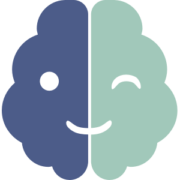An informational cascade is a perception—or misperception—spread among people because we tend to let others think for us when we don’t know ourselves. For example, recently John Tierney (tierneylab.blog.nytimes.com) discussed the widely held belief but little-supported belief that too much fat is nutritionally bad. Peter Duesberg contends that the HIV hypothesis for AIDS is such an error (please note, I am not agreeing with him).
Sometimes cultural assumptions can lead to such errors. Stephen Gould described countless such mistakes, spread by culture or simple lack of data, in The Mismeasure of Man. Gould points out errors such as reifying abstract concepts into entities that exist apart from our abstraction (as has been done with IQ), and forcing measurements into artificial scales, both assumptions that spread readily within and without the scientific community without any backing.
Mind, informational cascades do not have to be errors—one could argue that the state of being “cool” comes from an informational cascade. Possibly many accurate understandings come via informational cascades as well, but it’s harder to demonstrate those because of the nature of the creatures.
It works like this: people tend to think in binary, all-or-nothing terms. Shades of gray do not occur. In fact, it seems the closest we come to a non-binary understanding of a concept is to have many differing binary decisions about related concepts, which balance each other out.
So, in the face of no or incomplete information, we take our cues from the next human. When Alice makes a decision, she decides yes-or-no; then Bob, who knows nothing of the subject, takes his cue from Alice in a similarly binary fashion, and Carol takes her cue from Bob, and so it spreads, in a cascade effect.
Economists and others rely on this binary herd behavior in their calculations.
But.
The problem is that people don’t always think this way; therefore people don’t have to think this way. Some people seem to have the habit of critical thought at an early age. As well, the very concept of binary thinking seems to fit too neatly into our need to measure. It’s much easier to measure all-or-nothing than shades of gray, so a model that assumes we behave in an all-or-nothing manner can easily be measured, and is therefore more easily accepted within the community of discourse.
Things tend to be more complex than we like to acknowledge. As Stephan Wolfram observed in A New Kind of Science,
One might have thought that with all their successes over the past few centuries the existing sciences would long ago have managed to address the issue of complexity. But in fact they have not. And indeed for the most part they have specifically defined their scope in order to avoid direct contact with it.
Which makes me wonder if binary classification isn’t its own informational cascade. In nearly every situation, there are more than two factors and more than two options.
The tradition of imposing a binary taxonomy our world goes back a long way. Itkonen (2005) speaks about the binary classifications that permeate all mythological reasoning. By presenting different quantities as two aspects of the same concept, they are made more accessible to the listener. By placing them in the concept the storyteller shows their similarities, and uses analogical reasoning to reach the audience.
Philosophy speaks of the law of the excluded middle—something is either this or that, and not an in between—but this is a trick of language. A question that asks for only a yes or no answer does not allow for responses such as both or maybe.
Neurology tells us that neurons either fire or they don’t. But neurons are much more complex than that. From O’Reilly and Munakata’s Computational Explorations in Cognitive Neuroscience (italics from the authors, boldface mine):
In contrast with the discrete boolean logic and binary memory representations of standard computers, the brain is more graded and analog in nature… Neurons integrate information from a large number of different input sources, producing essentially a continuous, real valued number that represents something like the relative strength of these inputs…The neuron then communicates another graded signal (its rate of firing, or activation) to other neurons as a function of this relative strength value. These graded signals can convey something like the extent or degree to which something is true….
Gradedness is critical for all kinds of perceptual and motor phenomena, which deal with continuous underlying values….
Another important aspect of gradedness has to do with the fact that each neuron in the brain receives inputs from many thousands of other neurons. Thus, each individual neuron is not critical to the functioning of any other—instead, neurons contribute as part of a graded overall signal that reflects the number of other neurons contributing (as well as the strength of their individual contribution). This fact gives rise to the phenomenon of graceful degradation, where function degrades “gracefully” with increasing amounts of damage to neural tissue.
So, now we have a clue that binary thinking may be an informational cascade all its own, what do we do about it?
References
Itkonen, E. (2005). Analogy as structure and process: Approaches in linguistics, cognitive psychology and philosophy of science. Amsterdam: John Benjamins Publishing.
O’Reilly, R.C., and Y. Munakata. (2000). Computational Explorations in Cognitive Neuroscience: Understanding the Mind by Simulating the Brain. Cambridge, MA: MIT Press.
Originally posted on alexfiles.com (1998–2018) on May 5, 2008.
